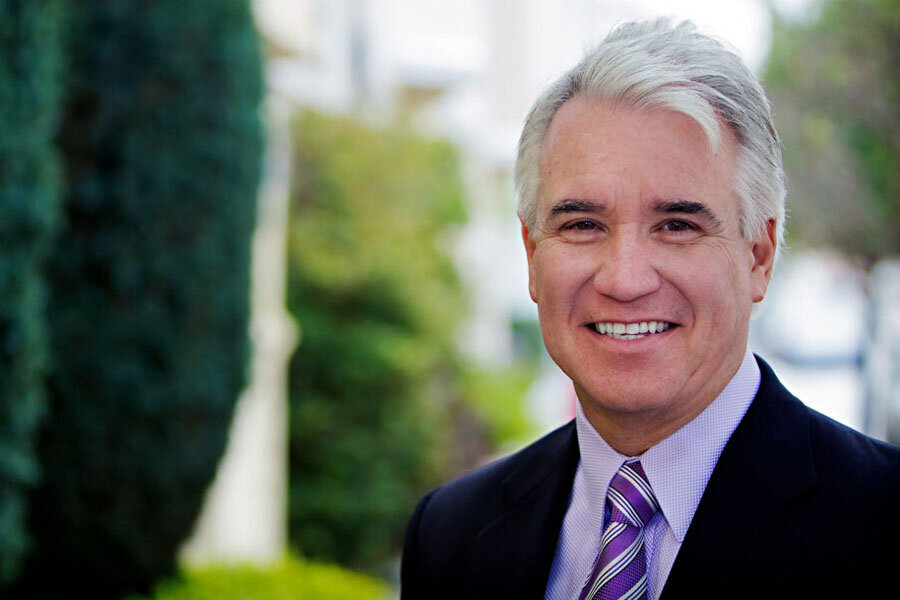San Francisco wrestles with fallout from racist police texts
San Francisco has joined a growing list of cities working to increase transparency and accountability in policing and prosecutions – including the difficult job of rooting out racial and ethnic bias that may have tainted past criminal investigations, leading to wrongful arrests and convictions.
This week, San Francisco District Attorney George Gascón announced that he was adding three former judges to a task force investigating whether officer bias led to wrongful arrests or prosecutions in some 3,000 cases.
The situation came to light when racist and homophobic text messages sent by 14 officers were discovered during the federal investigation of the case of a police sergeant convicted of corruption. The texts included slurs against African Americans, Mexicans, Filipinos, and gays. Some officers repeatedly used the phrase "white power."
“In the last few months, we have seen city after city where police use of force or other police activity is coming to the light and indicating that racial animosity and other types of biases play a significant role,” District Attorney Gascón told reporters Thursday. “I think at one point we felt we would be immune from that type of activity.”
San Francisco is known as a progressive, diverse, and welcoming city. But officials – as well as civil rights advocates – point to evidence that it has not been immune from racial animosity and bias in policing.
The Rev. Amos Brown, a San Francisco NAACP board member, cites city statistics showing that African Americans comprise only about 5 percent of the city’s population but make up half of jail inmates and more than 60 percent of those in juvenile hall.
“This is a moral issue,” Mr. Brown said at a news conference with Gascón. “Everybody is guilty, whether Republican or Democrat, whether judge, probation officer or police officer.”
The 3,000 cases under review (including some 1,600 convictions) are those in which the 14 officers had some involvement, either as the arresting authority or in giving testimony in criminal trials.
The move comes as other cities are examining policies and procedures following a string of violent police-citizen encounters, including fatal police shootings, often involving white officers and unarmed minority suspects.
- In Los Angeles this week, Police Chief Charlie Beck quickly called a community meeting when an officer fatally shot an unarmed transient. Based on initial evidence from a security camera video, Chief Beck said he was “very concerned” about the circumstances of the shooting. (In this case, both the officer and the homeless man were black.)
- In Atlanta, Police Chief George Turner "has dramatically diversified the face of his department, discouraged racking up petty arrests that fall disproportionately on minorities, tapped the power of big data to institute preventive policing, and tried to create a more humane force," the Monitor’s Patrik Jonsson reported earlier this year.
- The Seattle Police Department is posting blurry, silent versions of videos taken by officers on YouTube, giving the public a chance to see what they involve while also protecting the privacy of those depicted.
- In San Diego this week, Police Chief Shelley Zimmerman announced a tightening of police body camera procedures following a police shooting death in which the officer failed to turn on his video camera before confronting a threatening suspect in a dark alley. In a statement Thursday, Chief Zimmerman said officers “will now be trained to start recording prior to their arrival on radio calls that are likely to result in an enforcement contact.''
More generally, some local prosecutors are also creating "conviction integrity" units to look for wrongful convictions.
All such steps as these are essential, says Gascón, a former San Francisco police officer who served as chief for a year before successfully running for district attorney.
"If we want the public to trust law enforcement we need a culture of justice, transparency and accountability – not bias, secrecy and impunity," he said. "The actions of a few have undermined the public's faith in the police officers."
The three former judges named to the task force include state Supreme Court Justice Cruz Reynoso, Judge Ladoris Cordell, and Judge Dickran Tevrizian, all of whom have experience in civil rights and criminal justice reform.
The cases being reviewed go back 10 years, and Gascón acknowledged that some of the alleged officer misconduct took place when he headed the department, the Los Angeles Times reports. “I feel terrible,” he said.
If one person was wrongly imprisoned because of officer bias, "that's one too many," Gascón said.








